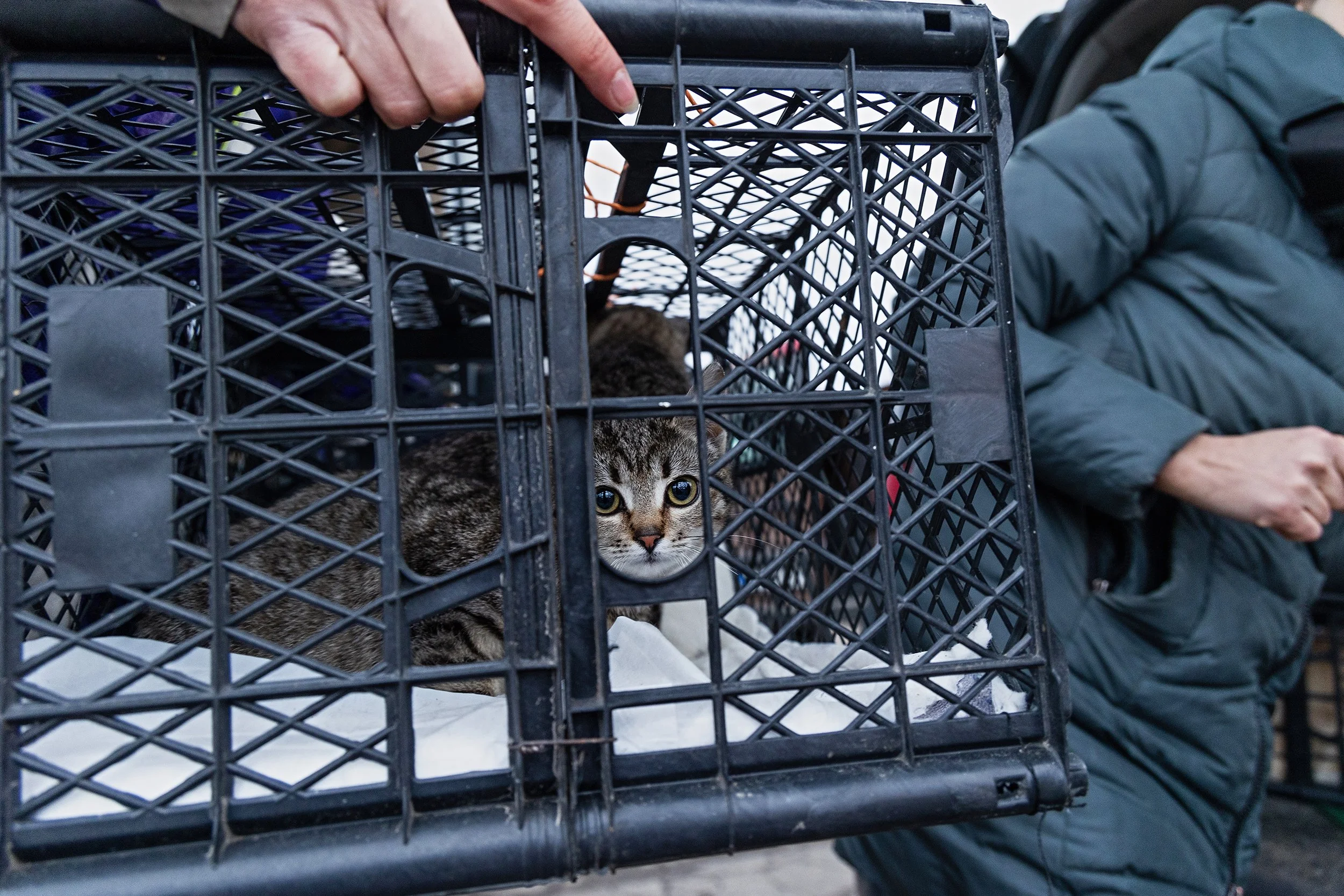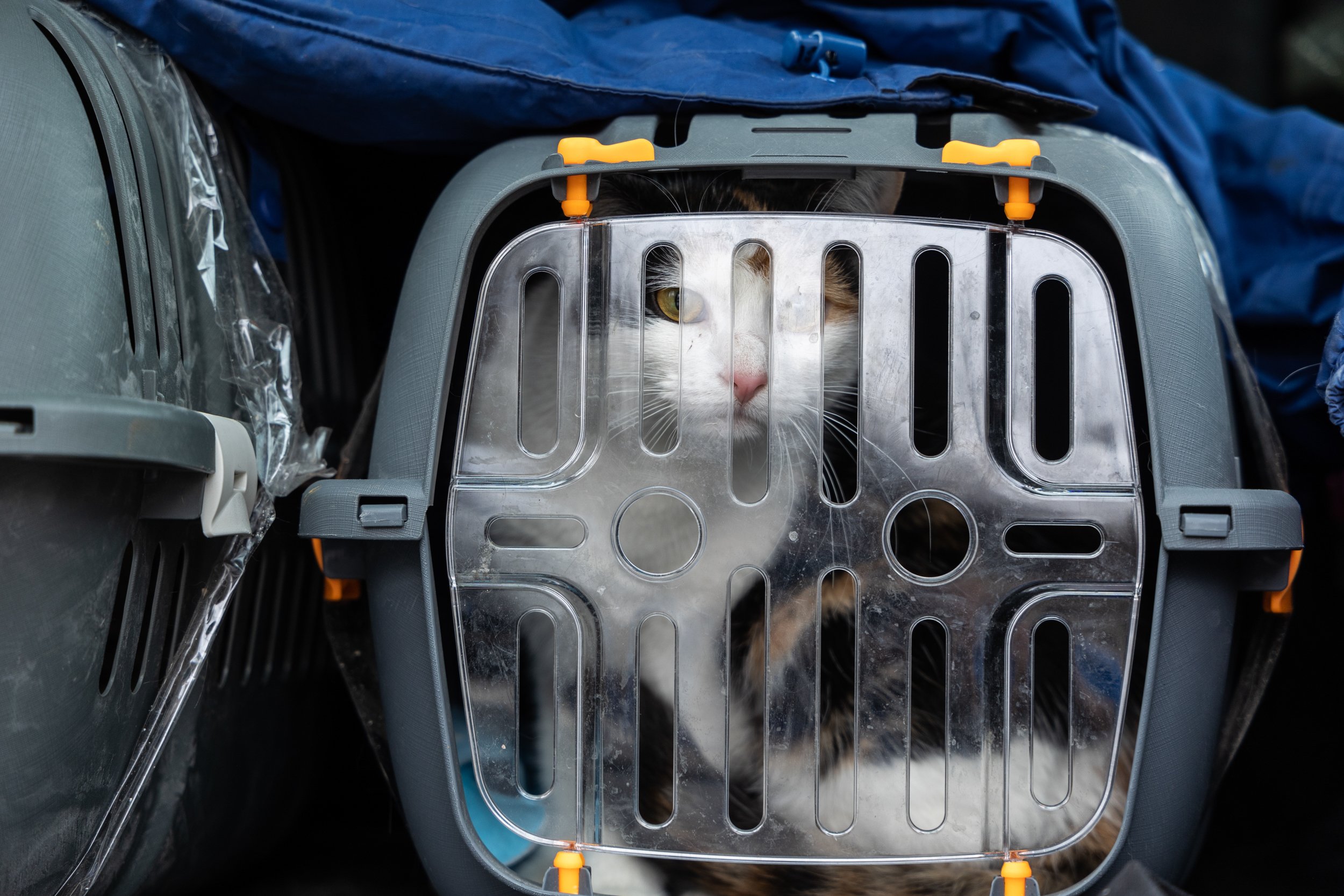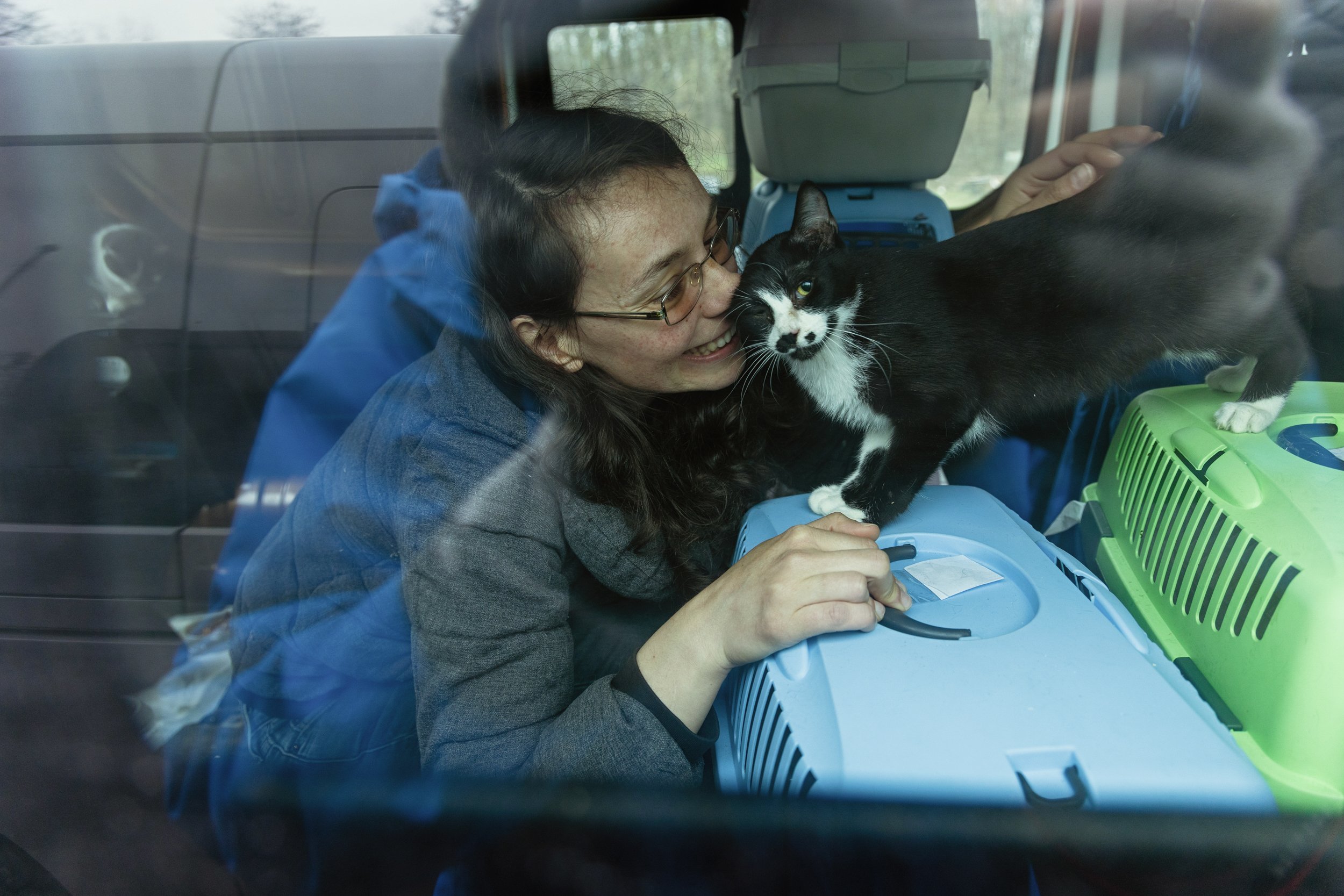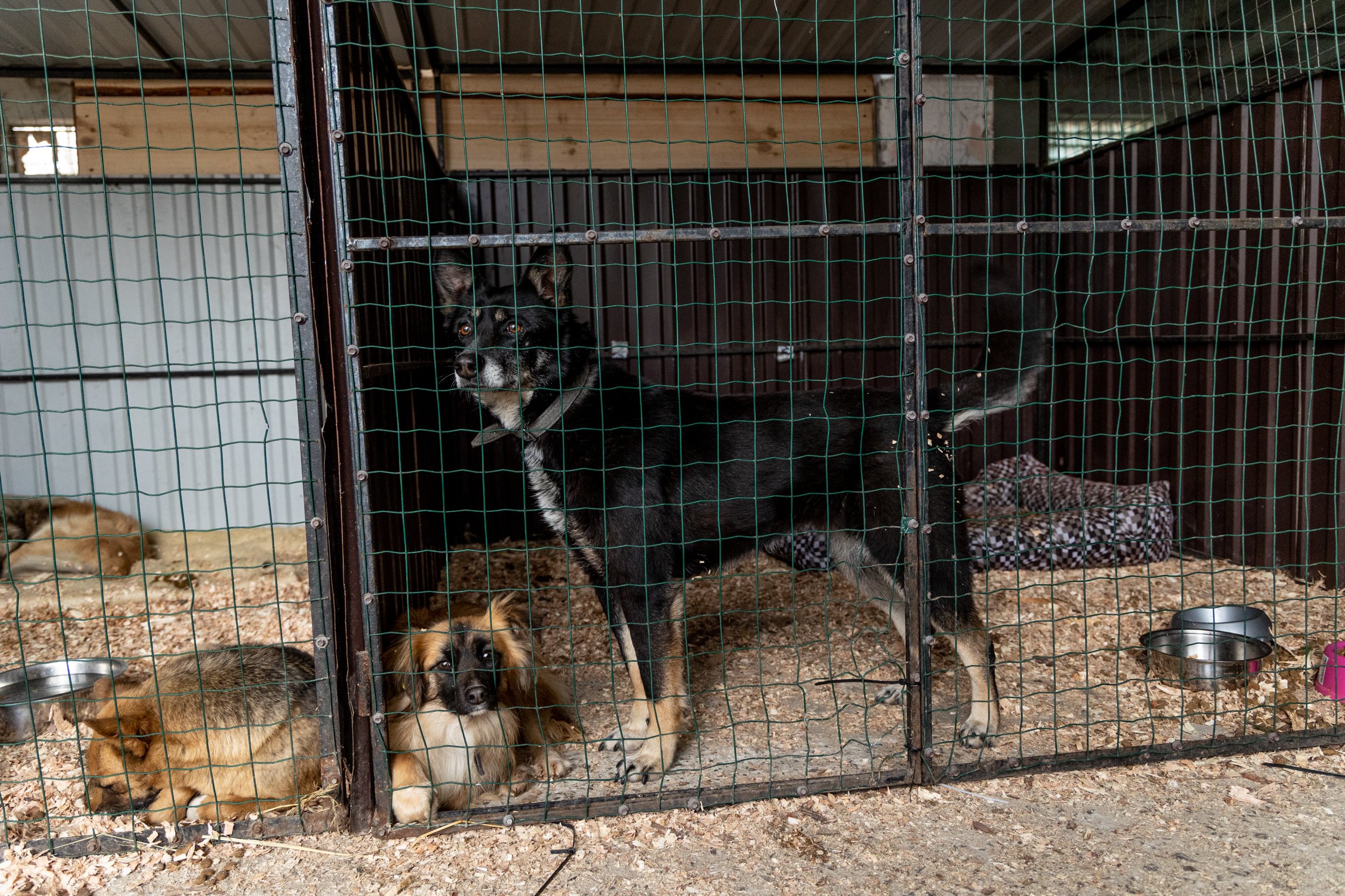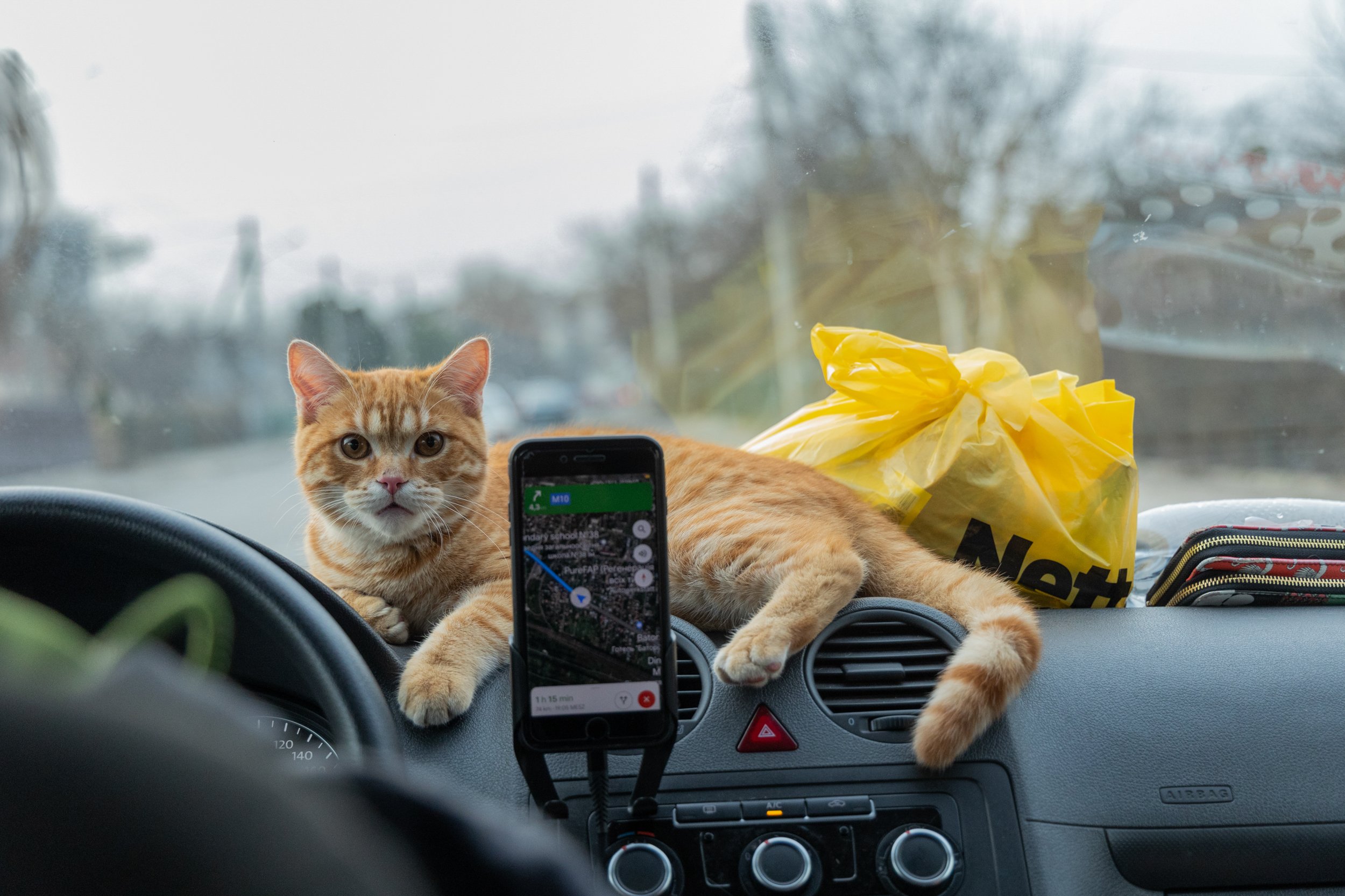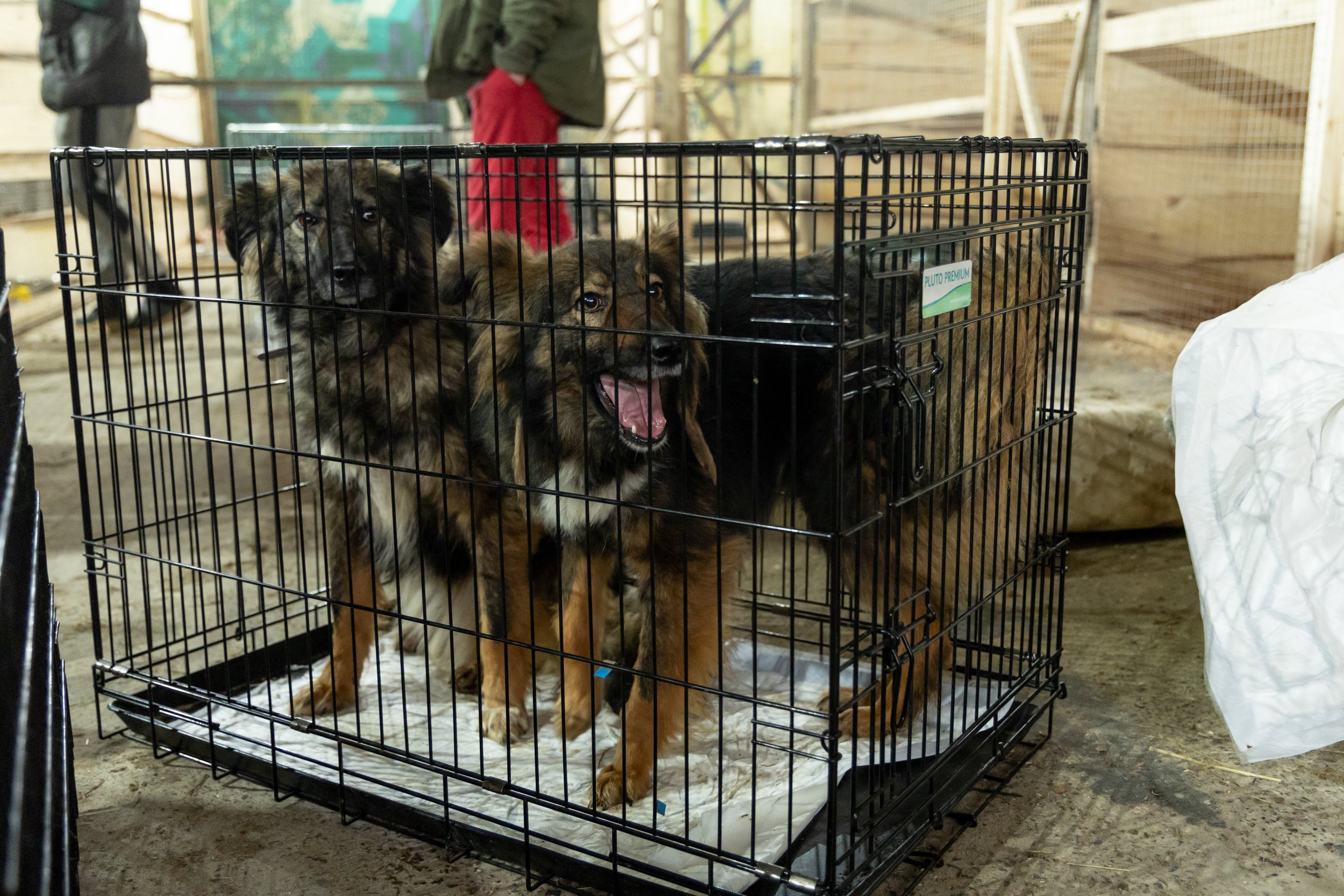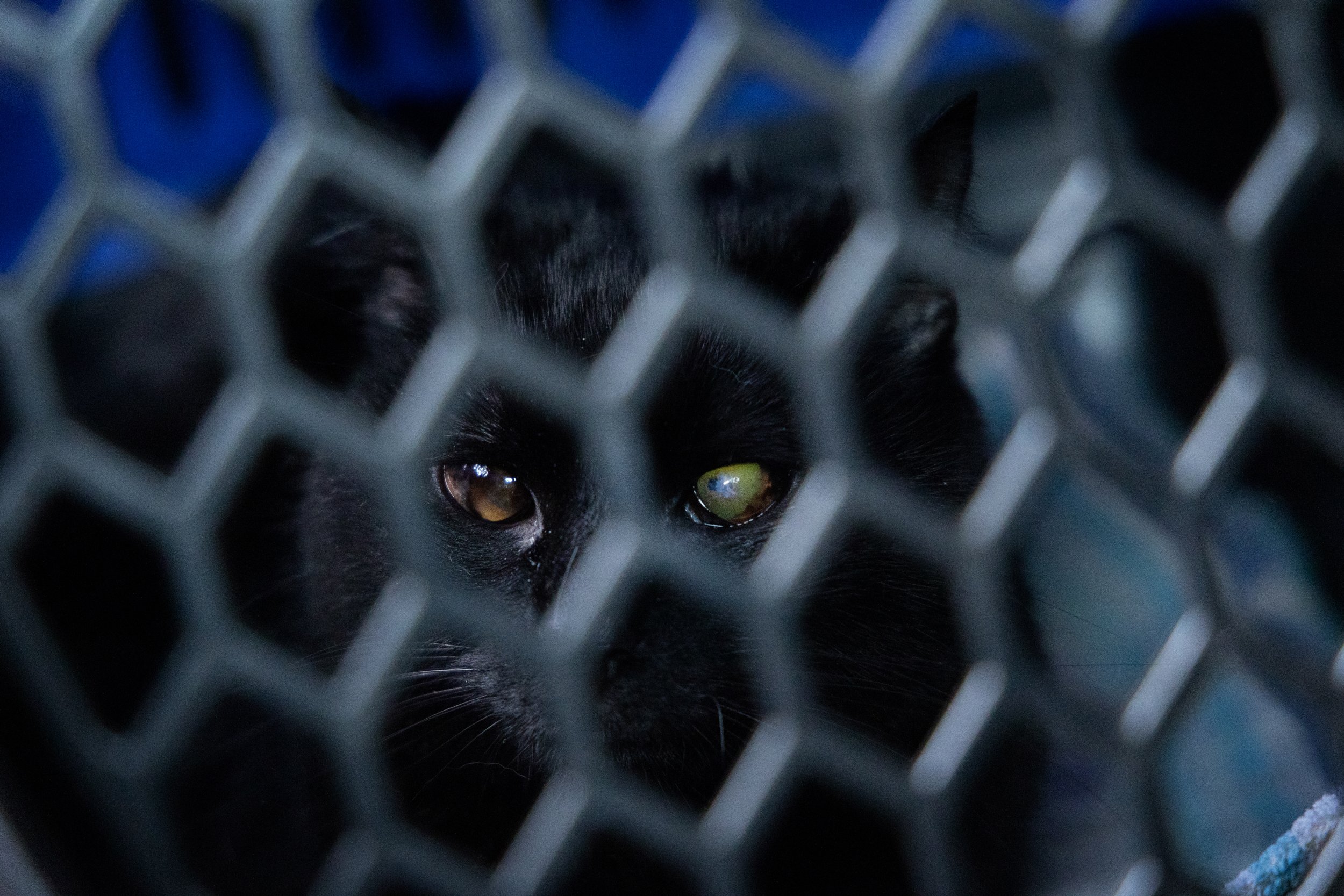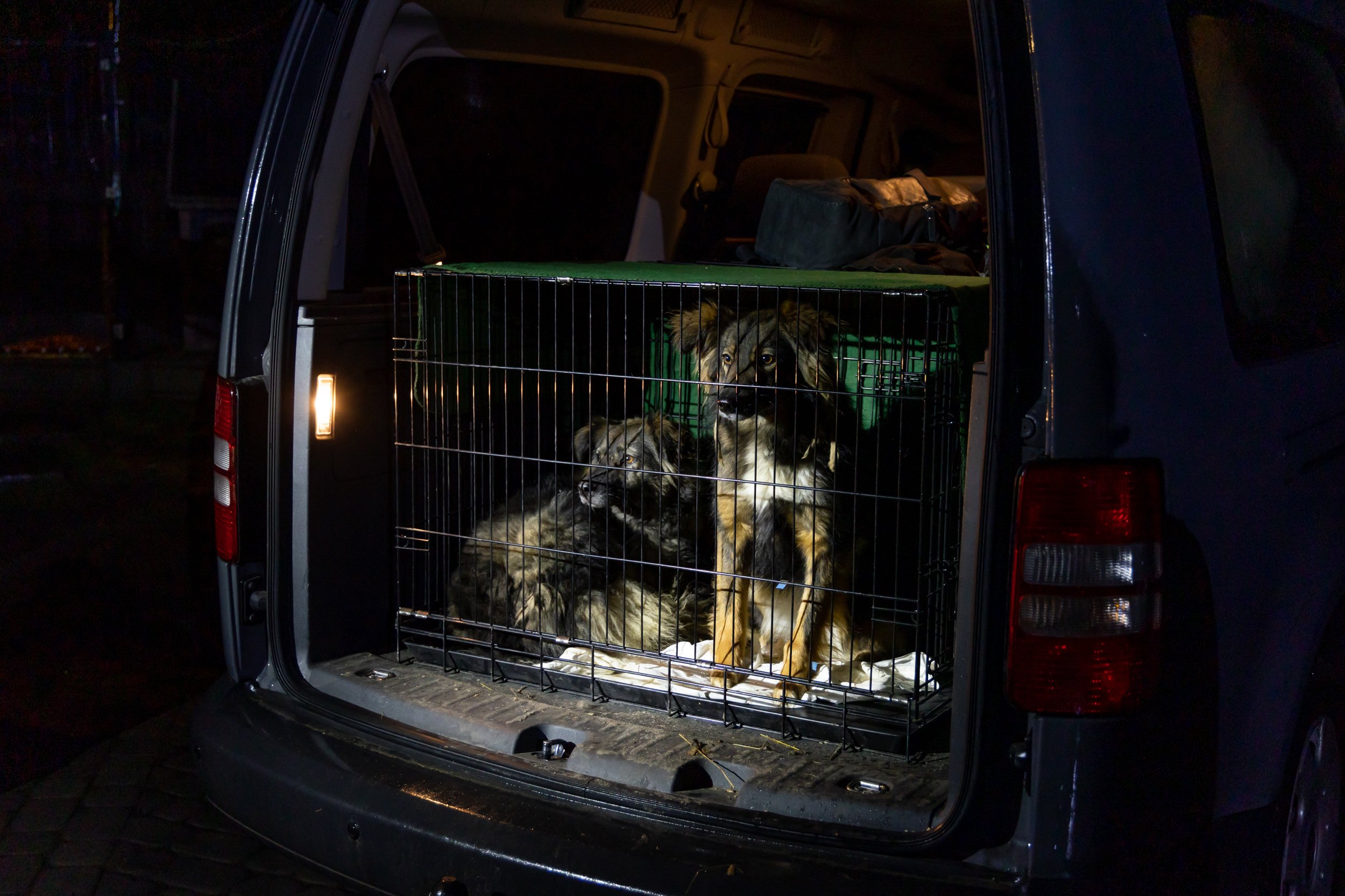Ukraine: Non-human Animals in War
Twenty displaced cats from a shelter near Korosten, an area northwest of Kyiv affected by bombing, were taken by volunteers to Poland. They arrived in plastic vegetable crates and wooden crates tied with string having been on the road for over 30 hours. They were taken to Poland later. Published in National Geographic.
Beginning March 29th, 2022, I spent a week on the ground in southeastern Poland and western Ukraine, documenting animal transports led by PETA Germany in collaboration with Ukrainian rescue organizations. Missions included trips into Lviv as well as just across the Medyka border to rescue cats and dogs, displaced from Kyiv and other areas at major risk or already occupied by Russian forces. The border crossings often took several hours, as rules for bringing animals across changed daily and numbers of people crossing over continued to fluctuate.
Circumstances varied: one van of 20 cats had spent 30+ hours in wooden and plastic vegetable crates in a rush to escape the Korosten area affected by bombing, an orange kitty named Simba was eventually reunited with his people who had fled Lviv in early March, two beagle brothers were successfully relocated to a new home in Bavaria and another group of 20 cats were transported by the team from the basement of an apartment building in Lviv as air raid sirens went off in the city. Many more animals were safely delivered into the EU and other rescues groups. The tireless efforts of the members of PETA and rescue groups in Ukraine were inspiring beyond words, all of whom were volunteering their time and risking their own safety to help.
As of late 2023, over 2,000 animals and counting have been coordinated out of Ukraine and long term border shelters erected to help facilitate the ongoing needs.
Behind-the-scenes from the first day and transport in Lviv, Ukraine. March 29, 2022.
Beagle brothers, transported from Lviv and relocated to a new home in Bavaria.
Simba, a one year old orange tabby from Lviv. He was reunited with his family in Europe.

